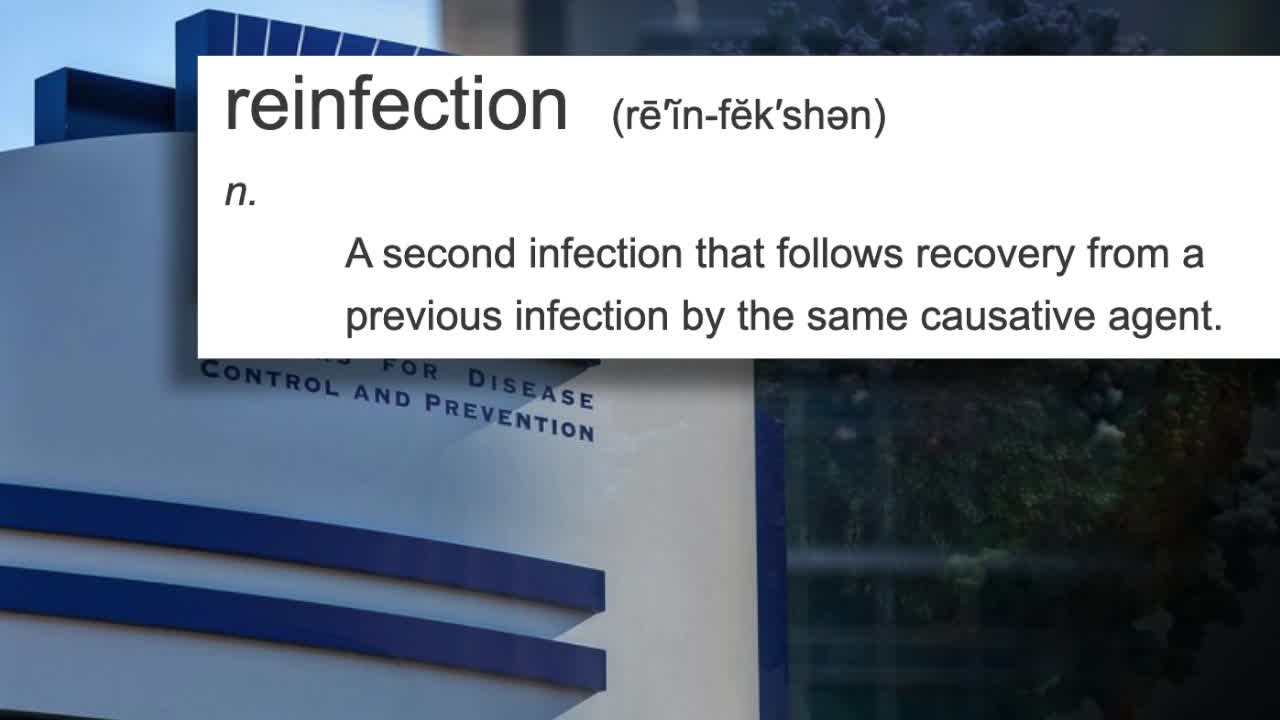A Farmington man talks about getting reinfected with COVID-19. What doctors say you can do to stay safe.
[anvplayer video=”5114328″ station=”998122″]
For Tyler Holman, getting COVID-19 for the second time was an unwelcome surprise.
“I didn’t expect to get it again,” he said. “Only because of the fact I had it once.”
Holman, 32-years-old from Farmington, told 5 EYEWITNESS NEWS he and his wife Tabitha both tested positive for COVID in May 2021, around Mother’s Day.
Then he got it again in December.
That time, he said, was much worse.

(KSTP)
“The second time was a massive headache, four days straight, and it wouldn’t go away until it finally broke,” he recalled. “That same night, I ended with a 104-degree temperature that broke the same day, too.”
Holman said that the second round hit hard, despite taking precautions.
He explained after contracting COVID the first time, he and Tabitha isolated in their basement and stayed away from their two-year old daughter Jade.
That was just the start of some new precautions.
“Got all my vaccination shots, my booster,” Holman remembered. “Stayed relatively distant from people outside the house as best as I could.”
The Centers for Disease Control calls it ‘reinfection’ — a person infected and recovered who becomes infected again.
Holman is not alone.
ABC News contacted health officials across the country and found information showing at least 1.6 million reinfection cases in 24 states.
Numbers from the Minnesota Department of Health (MDH) show there have been more than 75,000 cases statewide.
“This is a common story,” said Dr. Beth Thielen, an M Health Fairview infectious disease specialist. “Friends who have kids in daycare who got infected in an earlier wave and have tested positive again. Many colleagues who’ve been fully vaccinated during the pandemic have gotten sick.”
Thielen said there could be several reasons for reinfection cases to appear.
“There’s waning immunity,” she explained. “We’re seeing the virus change quite a bit, particularly as we’re seeing more and more global circulation, more people are getting infected, more children are getting infected.”
But there’s something else.
Minnesotans and people across the U.S. are taking advantage of travel season — all while restrictions have eased up in many cases.
“A lot of places are doing away with mask requirements,” Thielen noted. “People are traveling again more, so we’re seeing circulation, not just of SARS-coV-2, but a lot of respiratory viruses that have been quiet for a while.”
She said contracting COVID will provide some level of protection but that getting vaccinated is the best way to stay safe.
“I think the good news is that we’re see people who had vaccinations being relatively protected from severe disease,” Thielen said. “So despite the fact that there’s good circulation, now we aren’t seeing the strain on the health care system that we’ve seen during earlier waves of the pandemic.”
The CDC recommends testing for those who develop symptoms within ninety days of recovering.
Thielen recommends you might consider carrying a mask if you go into a crowded space and feel more comfortable wearing one.
She also said if you do get sick, anti-viral pills are available that can help.
“We have some oral drugs that are available if people get infected to shorten the course of the disease,” Thielen notes. “I think these are much more widely available than earlier.”
She says if you have questions, you should check with a health care professional.
For his part, Holman says he’s glad Jade never got sick — and that he and his wife have remained healthy.
But he says his family will now be extra careful with health issues surrounding COVID from now on.
“I guess at this point, I don’t think it’s ever going to go away,” Holman says. “We’re just going to have to deal with it, and do the best we can to stay as healthy as we can.”